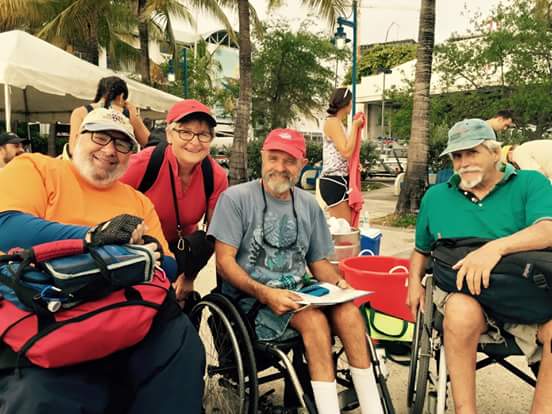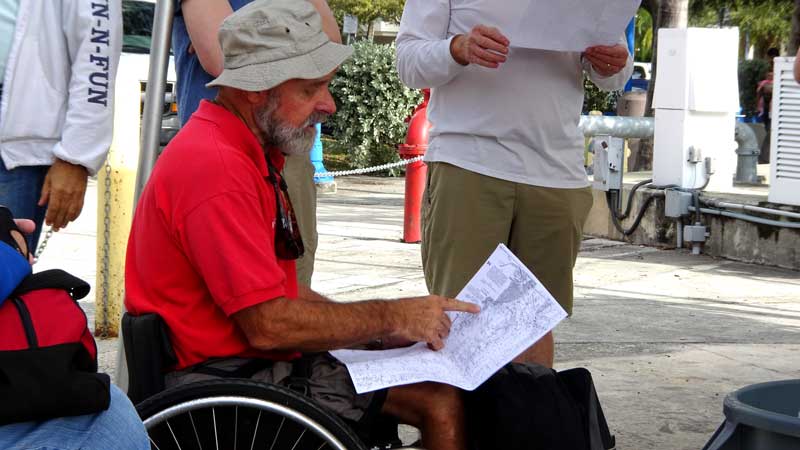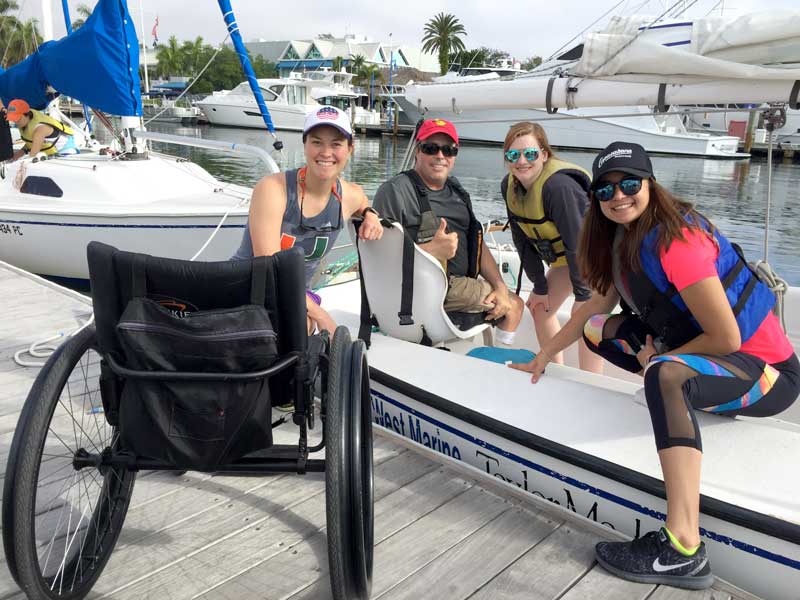Life doesn't always stay on the course you've plotted for yourself. This was a lesson I learned early in my life. Born and raised in the small town of Upton in central Massachusetts, I was steering toward a life as an athlete, earning six varsity letters in baseball and basketball in high school. But an injury my senior year meant I had to give up both sports.
Years later after graduating college, getting married, becoming a father, getting divorced, and starting a career, the wind changed direction and my life took another turn. Living in Connecticut I took an interest in sailing. I fell in love with the freedom of using just the wind to get from place to place. Sailing had become my passion. I dreamed of moving to a warm climate and living on a sailboat. Then in 1982 at the age of 36, I got into a car wreck and broke my back, injuring my spinal cord at T-11/12 and becoming paralyzed from the waist down. I thought my dream of living on a sailboat had died.
But I did not let my disability stop me and I was back to work within three months of my injury. Within one year of my injury, I found I could still be an athlete. I was introduced to the Connecticut Spokebenders wheelchair basketball team and discovered that I could still enjoy playing one of my favorite sports. Those guys taught me invaluable lessons about wheelchairs and life. I credit my rehabilitation to my involvement with that team, especially Stan Kosloski and Jay Kennedy. I ended up playing for about eight years, retiring in 1991. To this day I remain friends with the remaining members of that team, brothers for life.

While a member of the Connecticut Spokebenders, I also got very involved in helping to host both a regional and national wheelchair basketball tournament. As a result of my learning so much about wheelchairs and my community involvement, I was offered a position working in the wheelchair industry in Connecticut. Eventually I was offered a similar position in Florida with a company called Custom Mobility, owned by a now longtime friend, Bruce Bayes. While working for Bruce in 1992, I was introduced to the Quickie Titanium GPV, the same chair that Dave Kiley had won four national wheelchair basketball championships with. I bought one and remember telling people at the time that although it was kind of expensive, it would last a very long time. I was right; I am still using it.
Coincidentally, at around the same time that I got injured, a man named Harry Horgan in Newport, Rhode Island, became paralyzed and soon after started Shake-A-Leg (an old New England term for "get up and do something"). S.A.L. would invite 20-30 young SCI's to Newport for a few weeks in the summer to learn about dealing with their newfound disabilities. A few years later in 1986, Shake-A-Leg introduced a specially designed 20-foot sailboat called the Freedom Independence. I got my first sail on it in 1987, not knowing how dramatically it would change my life.
About the same time I moved from Connecticut to south Florida for my career, Shake-A-Leg opened a branch in Miami at the urging of Dr. Barth Green, Chief of Neurosurgery at the University of Miami and President of the Miami Project to Cure Paralysis. I spent five years as a consultant in the wheelchair business and then in 1994 got hired as Outreach Director for Shake-A-Leg Miami. I was in the right place at the right time. Through my work I was able to be a positive example for other disabled people to show that life can still continue and be very full and exciting. Eventually I got a Coast Guard Captain's License, became a Certified Sailing Instructor, and got into racing. I competed in the Independence Cup, the National Championship for Disabled Sailors 10 times, finishing in second place twice. Meanwhile Shake-A-Leg grew into the nation's largest disabled sailing program.

While at Shake-A-Leg Miami, I purchased a 35-foot sailboat which I sailed and lived aboard for over 20 years. My dream of living on a boat in a warm climate hadn't died, it was just delayed a bit. The whole time I lived aboard, my chair sat on the dock in salt air. I have replaced seat and back upholstery, bearings, wheels, and casters, but the frame, now 25 years old, is as good as new and will last me the rest of my life.
I retired from full-time work at S.A.L. Miami in 2006 but have continued to each a very unique six-week sailing class there once a year. We use 10 of these same specially designed sailboats with an Assistant Disabled Sailing Instructor on each boat. I am the Head Instructor. Our students are able-bodied PhD candidates in physical therapy at the University of Miami. The idea is to expose these students to people with real live disabilities, who have overcome them. They will use this knowledge to motivate their future patients.

Maybe you have set your life's rudder for a specific direction, but a change in wind has blown you off course. There is no reason to drop anchor and give up. There are multiple sports to keep you active. If you have a disability and an interest in sailing, check out US Sailing's Adaptive Sailing webpage. It will give you a list of places where there are adaptive programs. Additionally you can find information at the Shake-A-Leg Miami website, including upcoming events, summer camps, and mentoring opportunities.
Ultimately I did not allow my disability to knock me completely off course. It did mean a change of direction but I ended up sailing into a better future than I could have imagined. And I am still going strong. I cannot say enough positive things about how wheelchair sports, disabled sailing, and Quickie wheelchairs have kept me going.
About the Author
Captain Allen Fiske currently resides in Ft. Myers Beach, Florida. He is single with three adult children and six grandchildren. While retired, Allen still spends his time sailing, playing wheelchair tennis, and teaching others about adaptive sports.
Most of the stories here on Live Quickie were submitted by readers. Do you have a story to tell? We'd love to hear it. Submit your story here.